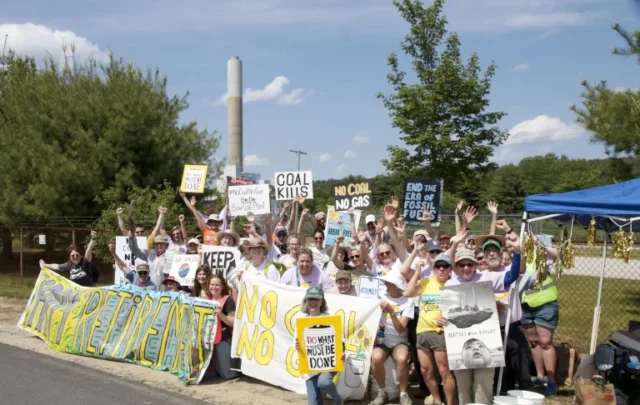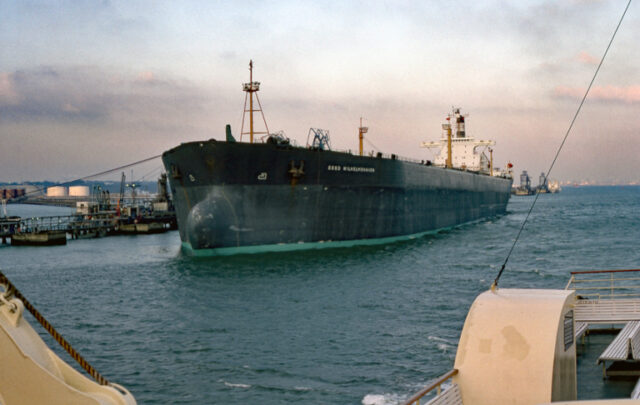Click on the headline (link) for the full text.
Many more articles are available through the Energy Bulletin homepage
All-expense-paid workshop on covering nuclear energy
School of Journalism, University of Tennessee
All-expense-paid workshop on covering nuclear energy
for student (and professional) environmental writers
University of Tennessee, July 16-18
To students and recent graduates interested in science and environmental journalism:
The University of Tennessee School of Journalism and Electronic Media will host a McCormick Tribune Specialized Reporting Institute on the Media and Nuclear Power Issues, July 16-18, 2009, utilizing the cooperation and expertise of the Oak Ridge National Laboratory, the Tennessee Valley Authority, and the UT Nuclear Engineering Department.
The energy crisis has refocused national attention on nuclear power, which at present contributes about 20 percent of the country’s electricity. Concerns and myths about nuclear power abound and thus media attention on this issue has never been more important. Reporting on the issue should give Americans a clear vision of the possibilities, developments, and obstacles in the nuclear energy field.
The three-day institute will focus on new frontiers in nuclear power, reporting the advantages and disadvantages of different kinds of nuclear reactors, and on nuclear safety and nuclear waste storage issues. For perspective, the workshop will also explore the coverage of other forms of energy production, including nuclear fusion, solar power, wind power, biofuels, and cleaner coal, and what kind of energy-production mix would best contribute to an environmentally sustainable, energy-independent nation. A feature of the workshop will be a tour of Oak Ridge National Laboratory and the TVA wind turbines on Buffalo Mountain.
All expenses for travel, food, and hotel accommodations are covered.
(26 June 2009)
From a notice sent to environmental journalists. I find it hard to see how this institute could offer a balanced picture when it involves organizations who have such an interest in nuclear power. All expenses seem to be paid. Funny sort of a program for a school of journalism to be sponsoring.
Maybe ASPO should offer all-expenses paid institutes on peak oil for journalists.
PDF of a press release on the institute.
-BA
Free Speech vs. Surveillance in the Digital Age
Amy Goodman, TruthDig.com
Tools of mass communication that were once the province of governments and corporations now fit in your pocket. Cell phones can capture video and send it wirelessly to the Internet. People can send eyewitness accounts, photos and videos, with a few keystrokes, to thousands or even millions via social networking sites. As these technologies have developed, so too has the ability to monitor, filter, censor and block them.
A Wall Street Journal report this week claimed that the “Iranian regime has developed, with the assistance of European telecommunications companies, one of the world’s most sophisticated mechanisms for controlling and censoring the Internet, allowing it to examine the content of individual online communications on a massive scale.” The article named Nokia Siemens Networks as the provider of equipment capable of “deep packet inspection.” DPI, according to the Electronic Privacy Information Center, “enables Internet Service Providers to intercept virtually all of their customers’ Internet activity, including Web surfing data, e-mail and peer-to-peer downloads.”
… Dissenters in Iran and China persist despite repression that is enabled in part by equipment from U.S. and European companies. In the U.S., the Obama administration is following a dangerous path with Bush-era spy programs that should be suspended and prosecuted, not extended and defended.
(24 June 2009)
We are what we think: Why the press fails us and how to fix it
Michael Tobis, Grist
… To see where we’re going it often helps to consider where we’ve been.
In the past century, the century of mass media, it was the media that mostly provided the language, the Lego blocks, the molecules of thought for most people. Tiny little cultural clusters coalesced under the pressure of very powerful aggregators and distributors of information, not just through news but even through entertainment.
In America, the news media developed a set of scruples that reporting and commentary functions should be kept very distinct. The reporting people in particular were taught this as a bedrock ethical principle, and continue to defend it fiercely. A news medium is an economic entity, but its success depends on public trust, so the thinking went. Thus the reporter should be scrupulously “neutral”. Because the ownership wanted an outlet for its own ideas, the “editorial” sandbox was set up for them.
So the raw materials for thought, the mindsets, the idea clusters, become 1) the world of commerce, trade, profit, wealth, “free enterprise” to give it its triumphal name 2) the world of strife, controversy, secrets kept and secrets breached, objectives baldly stated and objectives obscured, speech honest and speech mendacious, in other words the gritty world of “muckraking”. Even the opposition to these ideas was framed in the same terms: “the workers control the means of production”, “power to the people” “el pueblo unido jamas sera vencido” etc.
For a long time, this model served well enough. When there is a local question, say a road bond or new convention center, the tension between fiscal conservatism and boosterism is very well suited for this constellation: there is a horse race of two ideas, both resonate with the values of the community, no special expertise is required to understand the issues, and eventually, one side or the other will win. (Then, if the project is approved it will be executed well, indifferently or badly, again stories which the traditional media are well suited to examine.)
In the past, even national questions were somewhat more disjoint than they are now. Everything wasn’t deeply enmeshed in everything else, specifically because the American landscape wasn’t very crowded. So for the most part, even national issues had a local, parochial flavor; a public dance of debate, a backstage drama of arm twisting and intrigue, and on the whole, an increasingly homogeneous national character that matched circumstances well enough.
Thus emerges our habitual mental model: “there are two sides to every story”. Everybody bends the truth in their direction. The public interest is the sum of every individual’s self interest. Some people are especially influential because they control large institutions or large pots of money. Decisions are based on cultural affinities, alliances, and exchanges of political capital.
But the questions we face now are very different. Try to map this habit of mind onto questions of managing the earth as a tightly coupled and disrupted system and what do you get?
There’s an nerdy joke among scientists, that a mathematician who knows what to do when confronted with a burning building will set non-burning buildings alight, thereby reducing it to the previous problem. When there is only one side to a story, the press will manufacture another.
… We don’t need a friendlier name for doom. We need a 24 hour doom channel. God knows it’s not boring once you actually get the picture.
It’s the future. The press, or whatever replaces it, needs to read more like science fiction. Let’s talk about scenarios, about what problems nature will present us with, and about coalitions, how we will address them. Let’s talk about social organizing tools. Let’s look backward from 2400 AD and describe how we overcame the nation-state, the porliferation of mutually hostile religions and ideologies, and the ethic of greed. Let’s think about how to extract unity from hostility and fear. Let’s try to understand why surplus feels like poverty.
(24 June 2009)





